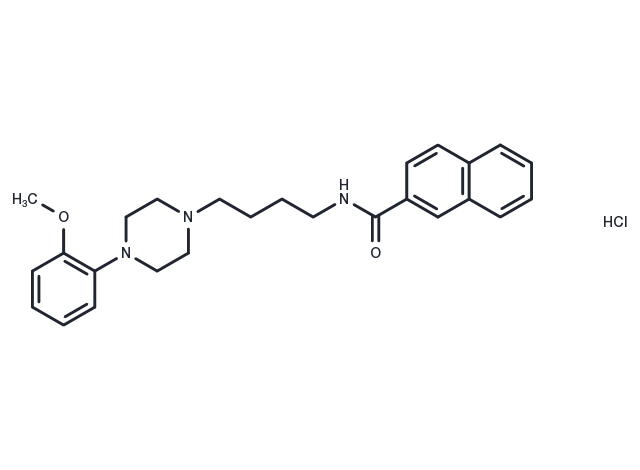Powder: -20°C for 3 years | In solvent: -80°C for 1 year


BP 897 is a potent and selective agonist of dopamine D3 receptor and it is a weak dopamine D2 receptor antagonist, with Kis of 0.92 nM and 61 nM for D3 and D2 receptors. Which shows low affinities at D1 and D4 receptors (Kis, 3 and 0.3 μM, respectively).

| Pack Size | Availability | Price/USD | Quantity |
|---|---|---|---|
| 1 mg | In stock | $ 147.00 | |
| 2 mg | In stock | $ 198.00 | |
| 5 mg | In stock | $ 313.00 | |
| 10 mg | In stock | $ 488.00 | |
| 25 mg | In stock | $ 785.00 | |
| 50 mg | In stock | $ 1,120.00 | |
| 100 mg | In stock | $ 1,480.00 | |
| 500 mg | In stock | $ 2,950.00 | |
| 1 mL * 10 mM (in DMSO) | In stock | $ 359.00 |

| Description | BP 897 is a potent and selective agonist of dopamine D3 receptor and it is a weak dopamine D2 receptor antagonist, with Kis of 0.92 nM and 61 nM for D3 and D2 receptors. Which shows low affinities at D1 and D4 receptors (Kis, 3 and 0.3 μM, respectively). |
| Targets&IC50 | D1:3 μM, D4:0.3 μM(ki), D3:(ki)0.92 nM, D2:61 nM(ki) |
| In vitro | BP 897 inhibits forskolin-induced cyclic AMP accumulation with an EC50 of 1.0 ± 0.3?nM, and increases mitogenesis, another D3-receptor-mediated response (EC50 = 3 ± 1?nM) in NG 108-15 cells expressing the human D3 receptor. However, BP 897 (1?μM) does not inhibit cyclic AMP accumulation or trigger mitogenesis in cells expressing the D2 receptor[1]. With a 70 times lower affinity at the D2 receptor (Ki, 61 nM). BP 897 also weakly binds to α1 and α2 adrenergic receptors (Ki = 60 and 83?nM, respectively), 5HT1A and 5HT7 receptors (Ki = 84 and 345?nM, respectively), and has negligible affinities (Ki > 1?μM) at muscarinic, histamine and opiate receptors. |
| In vivo | BP 897 (0, 0.05, 0.5, 1?mg/kg) inhibits cocaine-seeking behaviour that depends upon the presentation of drug-associated cues, without having any intrinsic, primary rewarding effects[1]. BP 897 binds to D2-receptor in mouse striatum with an ED50 of 15?mg/kg, and the D3-receptor occupancy is blow 0.5?mg/kg. |
| Molecular Weight | 454 |
| Formula | C26H32ClN3O2 |
| CAS No. | 314776-92-6 |
Powder: -20°C for 3 years | In solvent: -80°C for 1 year
DMSO: 9 mg/mL (19.82 mM)
You can also refer to dose conversion for different animals. More
bottom
Please see Inhibitor Handling Instructions for more frequently ask questions. Topics include: how to prepare stock solutions, how to store products, and cautions on cell-based assays & animal experiments, etc.
BP 897 hydrochloride 314776-92-6 GPCR/G Protein Neuroscience Dopamine Receptor Inhibitor inhibit stimuli BP-897 behaviour BP897 Hydrochloride addiction rewarding BP 897 BP-897 Hydrochloride BP 897 Hydrochloride cocaine drug-seeking motivational BP897 inhibitor
